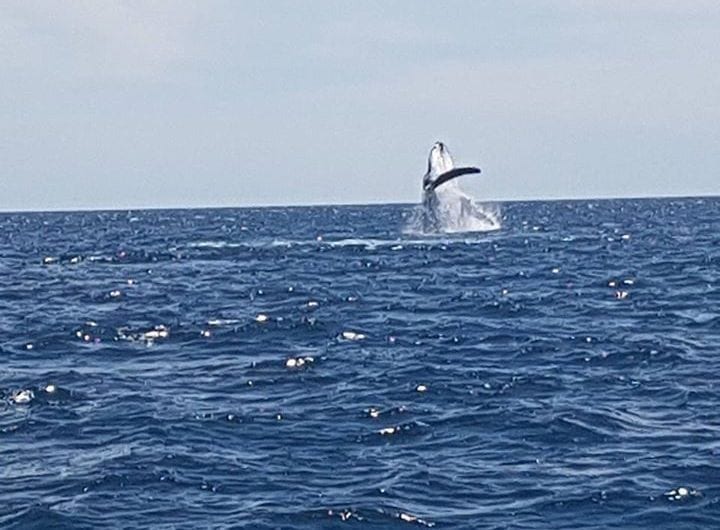How Intelligent are Humpback Whales?
Although we cannot get close enough to Humpback whales to see if we can teach or train them like other animals such as dogs. Or for instance how we can teach birds to talk, and dolphins and seals to do tricks. We know monkeys able very much able to learn. All of that aside, we do think Whales are smart because of what we do know of them: –
1. Humpback Whales have large brains
Whales, (Sperm Whale) not people, have the biggest brains of any animal on earth.
The adult sperm whale brain is 8,000 cubic centimetres. Our brain is about 1300 cubic centimetres.
Scientists compared a humpback whale brain with brains from several other cetacean species and found the presence of a certain type of neuron cell that is also found in humans.
They found that the humpback cerebral cortex, the part of the brain where thought processes take place, was similar in complexity to animals such as dolphins.
2. Humpback Whales communicate really well through their body language
It is believed that whale communication is one of the most sophisticated forms of communication among all animal species.
Whales use their body language and display behaviours to communicate their wants, needs and intentions to each other. Breaching, tail slapping and the like are all signs of playfulness or communicating to other whales that there is danger.
Gestures show compassion, nurture, dominance and curiosity. Whales have been observed lightly rubbing against or bumping other whales in their pod.
These light physical gestures are believed to be a form of nurture or intimacy among whales and can sometimes be seen when a mother is caring for her young or when two adult whales are performing a mating.
3. Humpback Whales can actually show emotion
Much like humans, whales are playful. This can often be seen when they breach for a group of humans who are whale watching. Are whales smart enough to perform on cue? Well, it can look like they are showing off! They can also often be seen touching and nurturing their babies or a mate in a gentle way.
Evidence suggests that whales have a complex brain structure for complex function, that they often live in complex societies, that they are capable of experiencing a range of emotions.
4. Humpback Whales can sing
Only male humpbacks sing. Both males and females communicate by sound.
They have at least 34 different variations of sounds to communicate. Many of the sounds are of very low frequency and are out of our range. These sounds travel kilometres underwater, and can be heard above the surface as well. Each type of sound means something different and they amazingly understand each other.
Whale songs evolve throughout the mating season and each year the song is a little different. As the theme changes the group pick up and incorporate this into the current sequence. This is one of the mysteries of the animal world.
Humpback whales sing as they are travelling along the Australian coastline. It was originally thought that they were stationary when singing but this is not the case.
5. Humpback Whales protect & save other species
Scientists are noticing that humpback whales are going out of their way to save other marine species from orcas. They are not sure if it is intentional or an unselfish act brought on by self-interest. Some scientists have witnessed humpbacks intervening in orca hunts to save other mammals many times – 115 to date to be exact – that they now suggest the protective behaviour could be ingrained in the whales, though no one is completely sure why.
Scientists are still a long way from understanding these magnificent creatures.
Closer to home: –Humpbacks and high-Rises is an independent not for profit research organisation dedicated to the research and protection of whales and dolphins in south-east Queensland, Australia. We focus our research and adaptation strategies on coastal impacts caused by urbanisation for the benefits of marine mammals and our coastal community.



